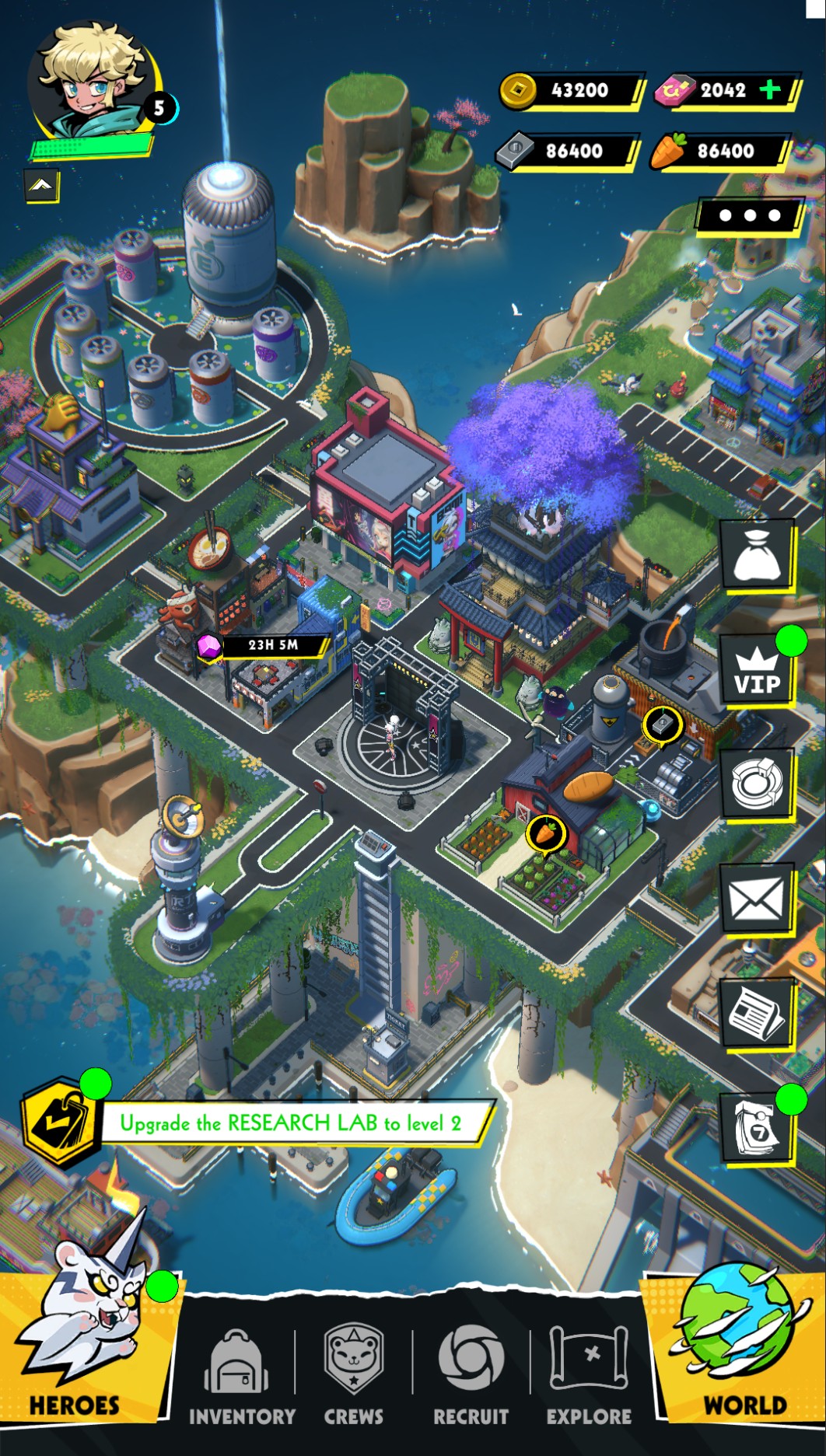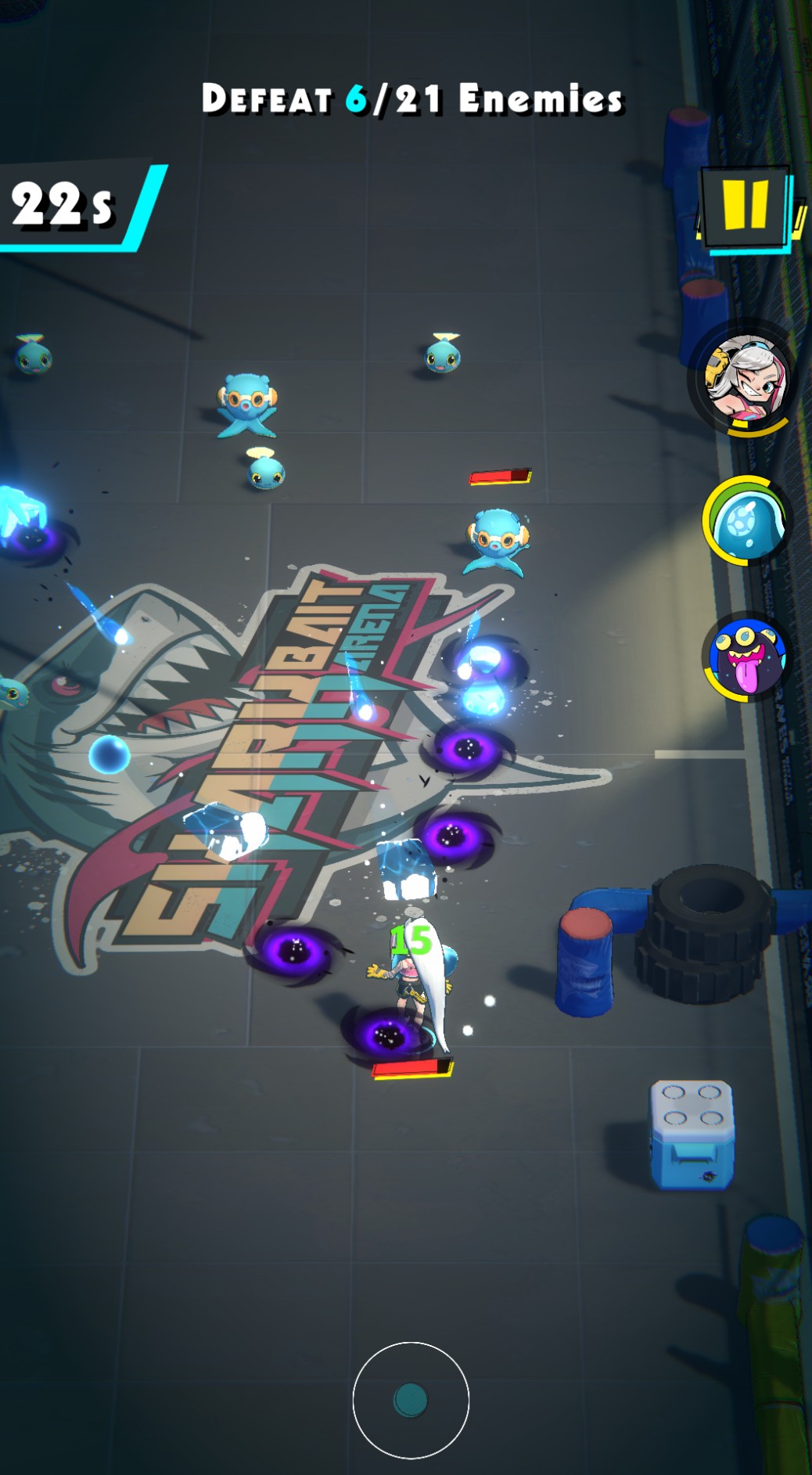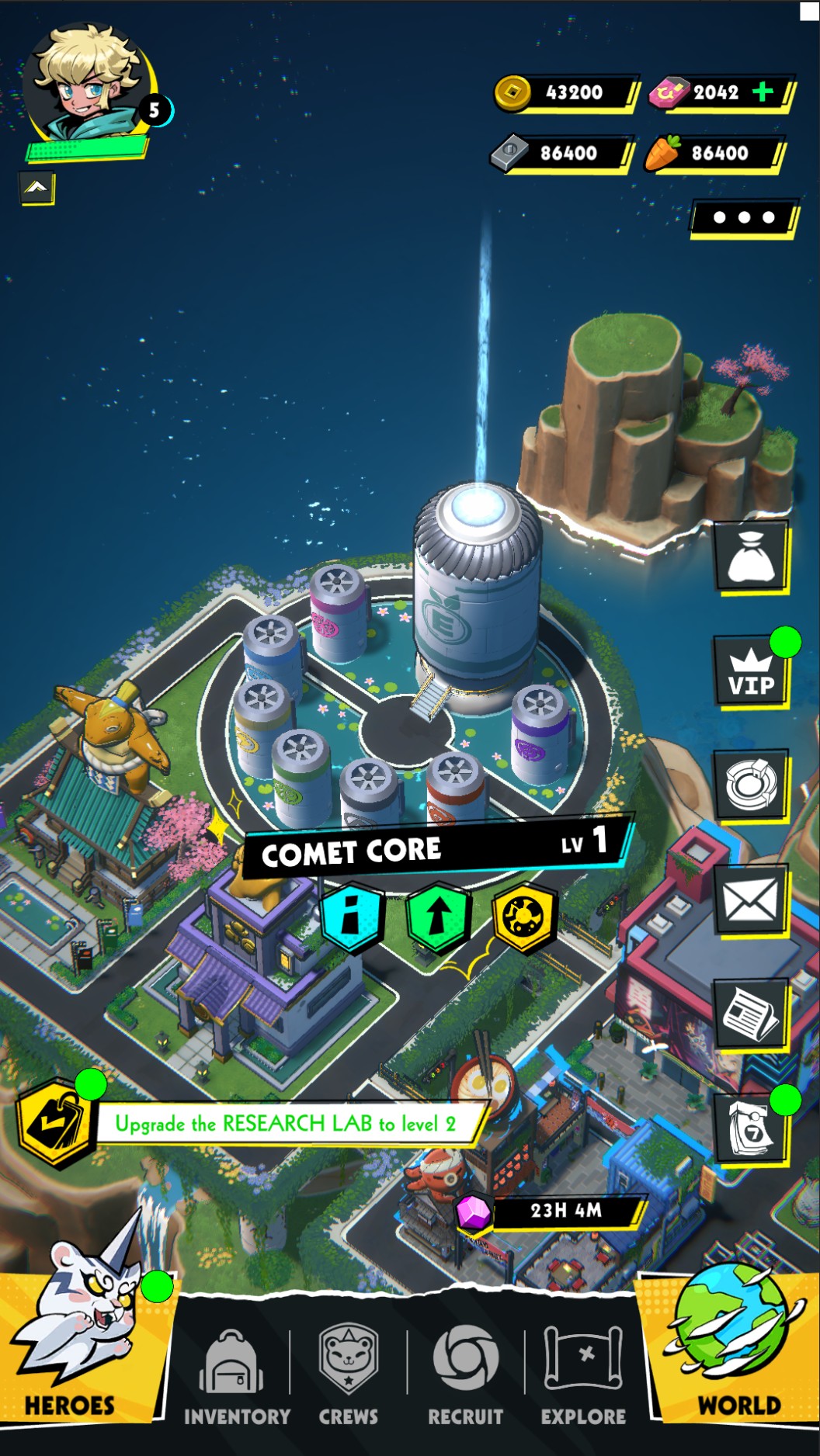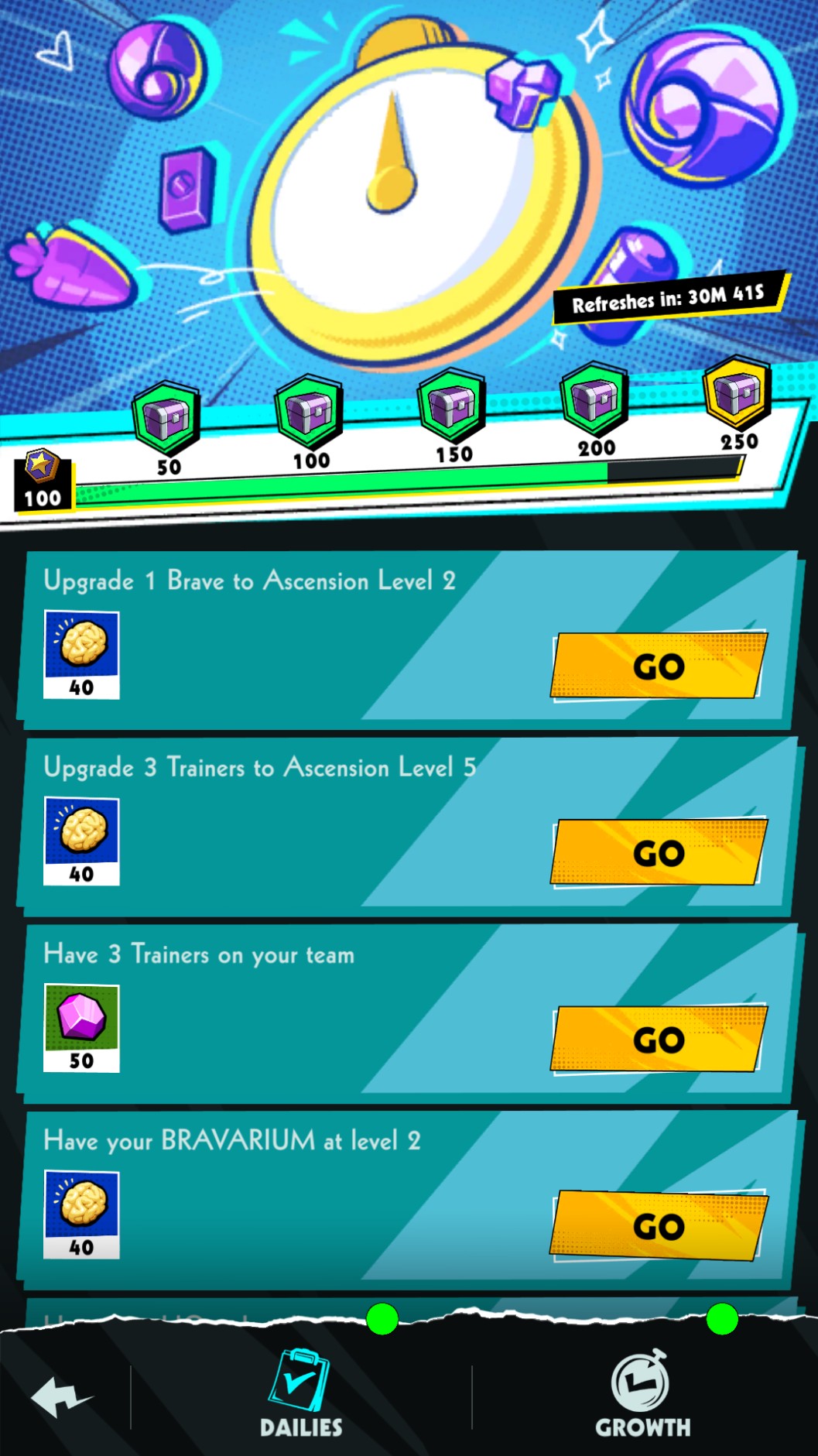Braves
Braves is a original IP that takes visual inspiration from pokemon. It is a 4X mobile game focused around base building, active gameplay, auto-chess like gameplay, and resource management.
Contributions: Senior Gameplay/Software programmer primarily working on the base building game loop, the many small features associated with those buildings, and the store pages.
Studio: Emerald City Games (ECG)
Platform: IOS/Android
Time spent on project: 11/2024 - 08/2025, 9 months.
Engine & Tools: Unity, proprietary gameplay drivin data systems.
Summary of Contributions
On this project, I was primarily responsible for the base building aspect of Braves. Initially, my work started with modifying ECG’s code base from Vikings: Valhalla. The code proved to be unsuitable for expanded use in a highly scalable environment, which manifested in a complete rewrite of the system.
Additionally, every system, every feature, was completely data-driven. In other words, spreadsheets were created and compiled into proprietary runtime formats that could be packaged with the game or be fetched from a server on application launch to drive gameplay. For example, all the damage values of attacks or the amount of resources generated from a particular building were all part of data sheets. These data sheets were also documented and provided to designers, and needed to be readable by people who were less technically inclined. I found that taking the time to explain and document in the simplest terms possible on what columns in these data sheets dramatically reduced the confusion from the design teams. This greatly increased productivity and reduced the amount of time I had to spend explaining how a thing works to another person. I wish more programmers took the time to invest in properly documenting their systems with the intended audience in mind.
My role quickly evolved into a senior-level position as I continued to effectively mentor and communicate across disciplines while working on critical systems within the Braves codebase. My duties grew to include project planning and time estimations. I would continue to document and clean up code by reducing complexity and mentoring other less-experienced team members. Some of whom had never worked within the games industry. I would also go on to document various data sheets and bring design teams up to speed on other programmers’ work. Sometimes, reading through code on the spot during meetings to get designers up to speed.
Despite my best efforts at the end of August 2025, the studio would report having run out of funding and proceeded to lay off the entire studio. Being the reasonable type, a few select others and I would put some additional time into the project in an attempt to capture further funding by request of the ECG executives. Although the project would get enough work done to reach the milestone requirements of the publisher for more funding, it would appear that business relations were souring. At the time of writing Braves remains in a state of uncertainty. I hope that the studio is able to find the funding required to pull through and launch Braves to a wider audience.
Gallery



